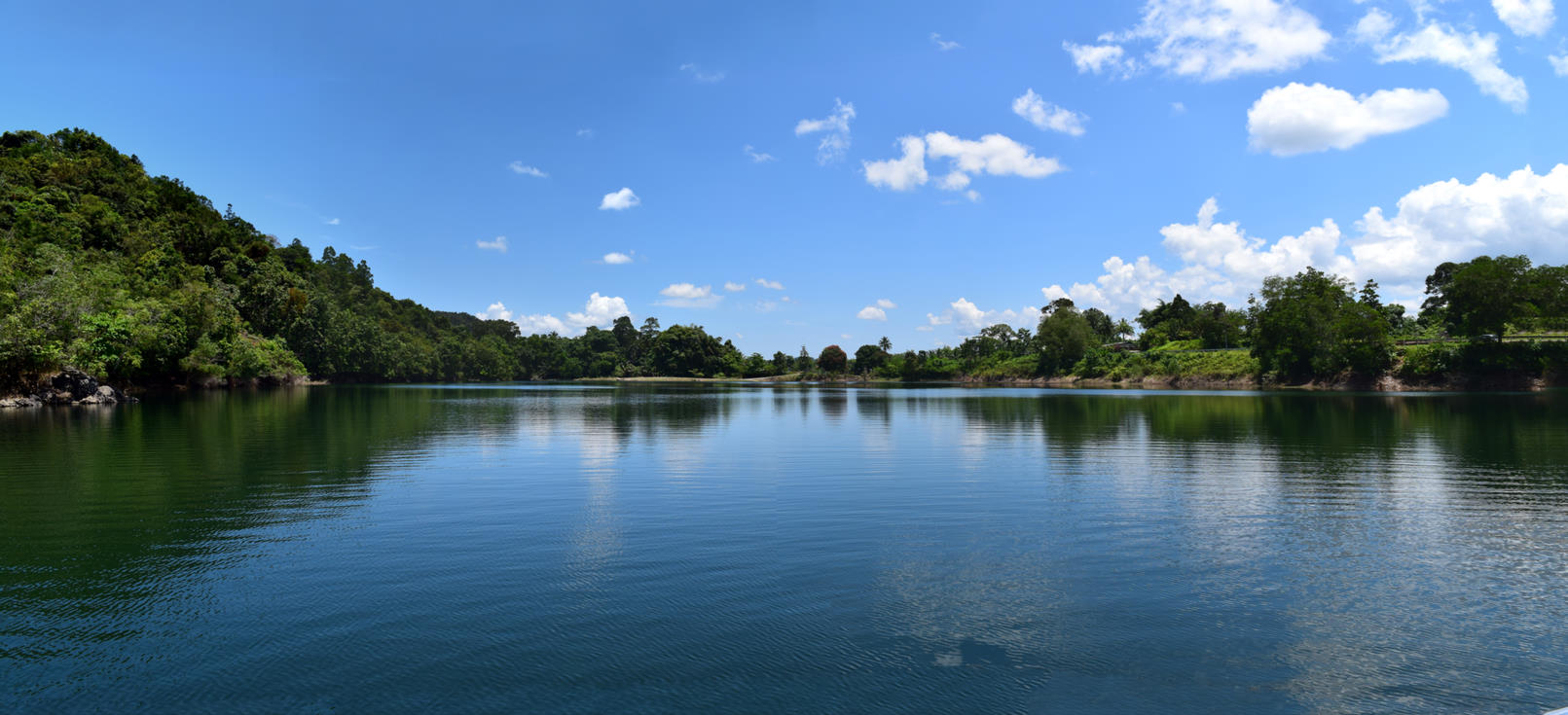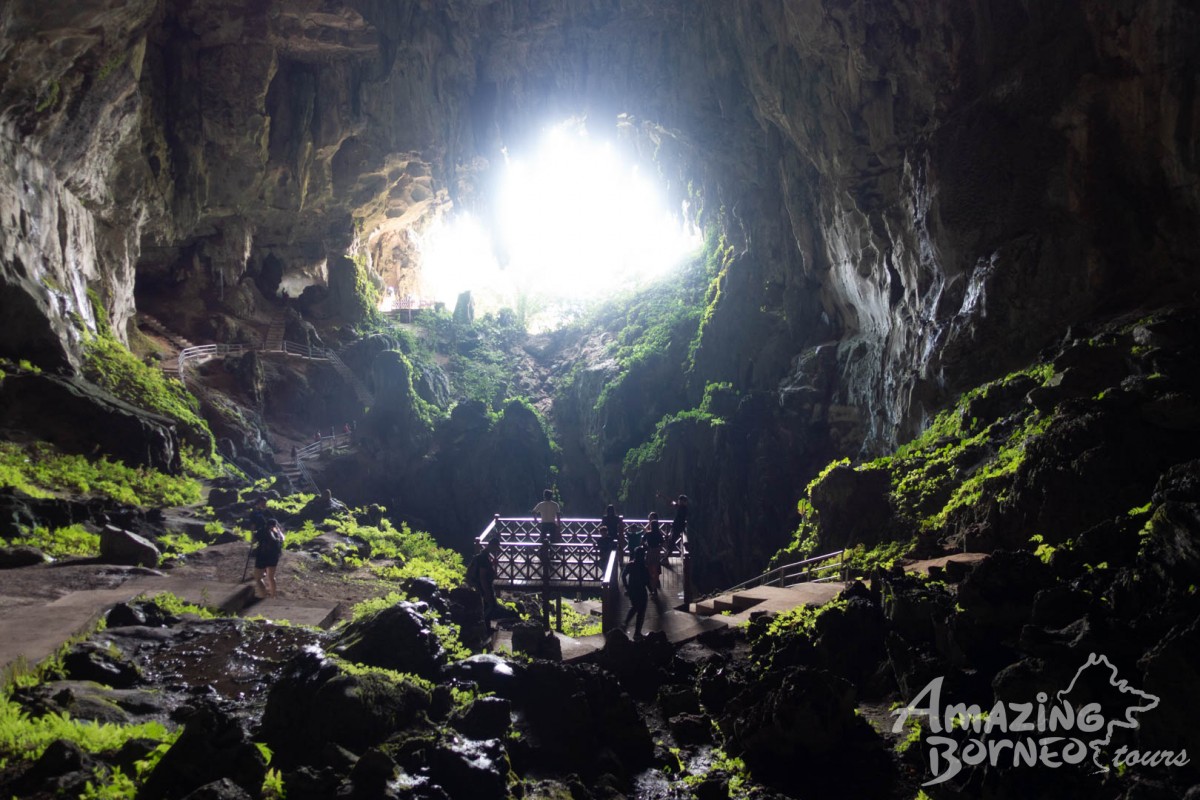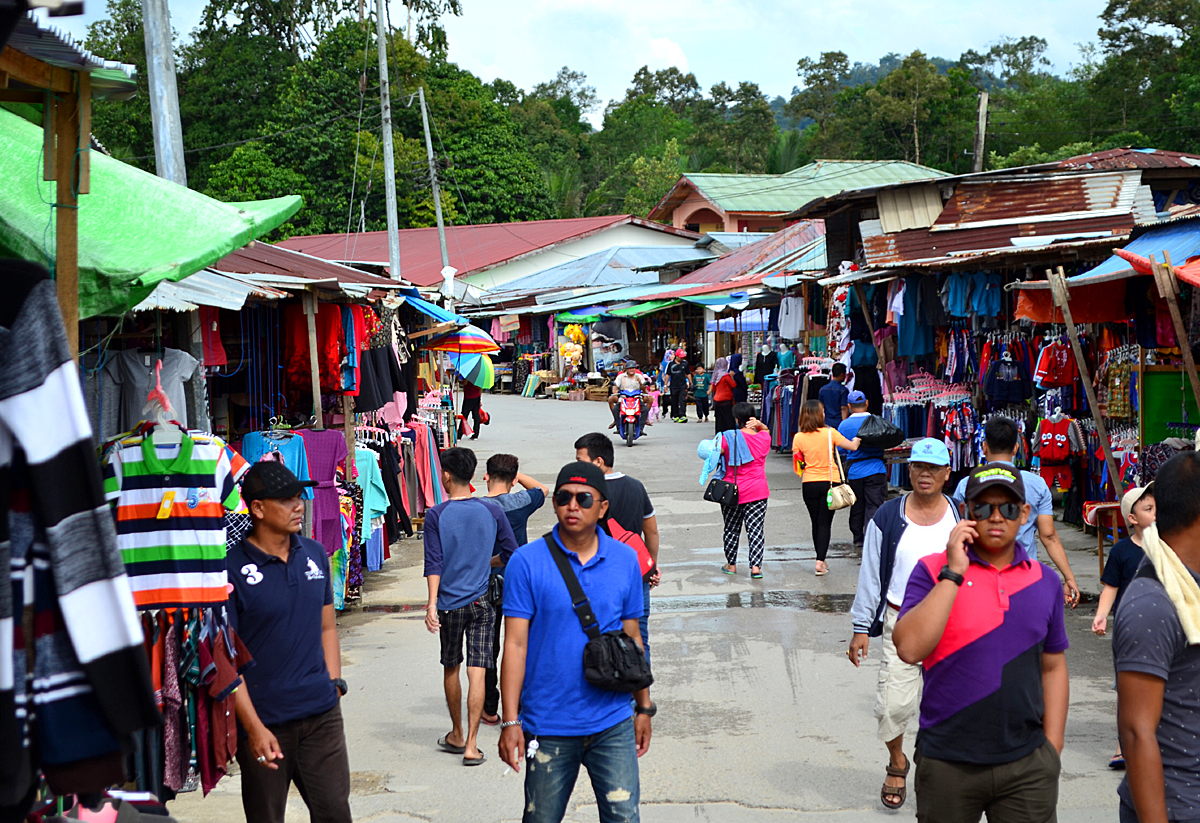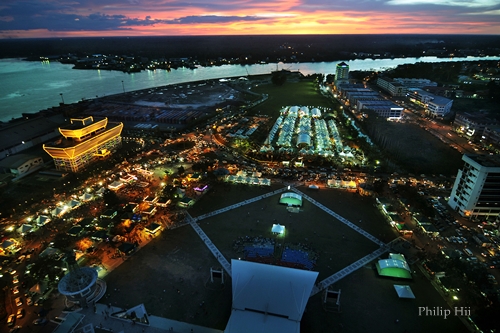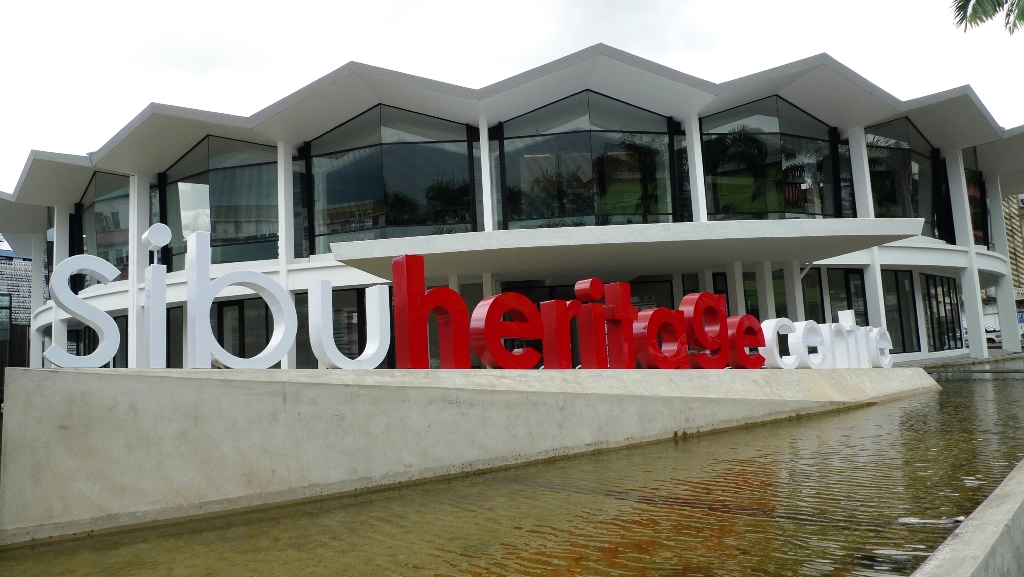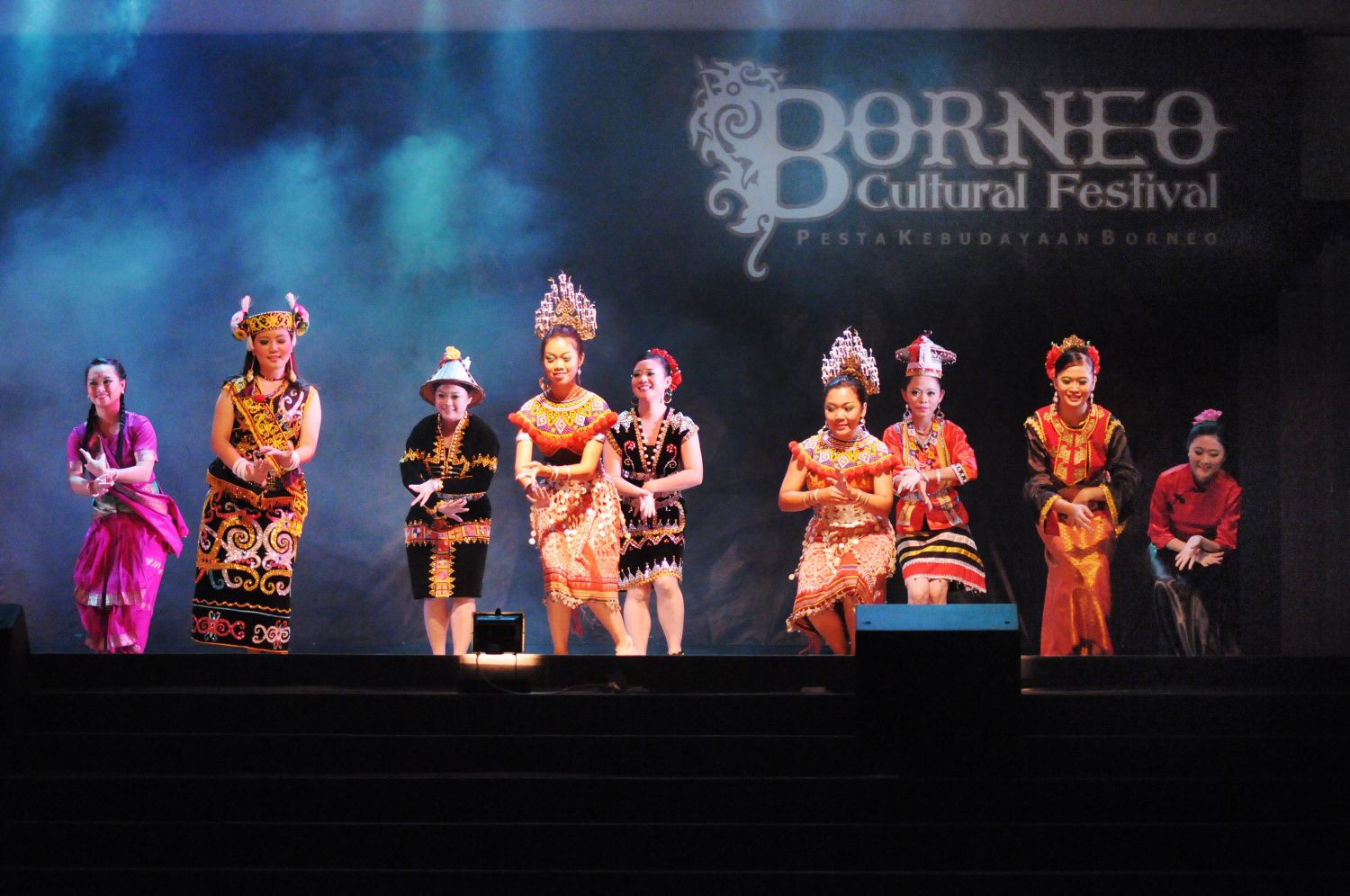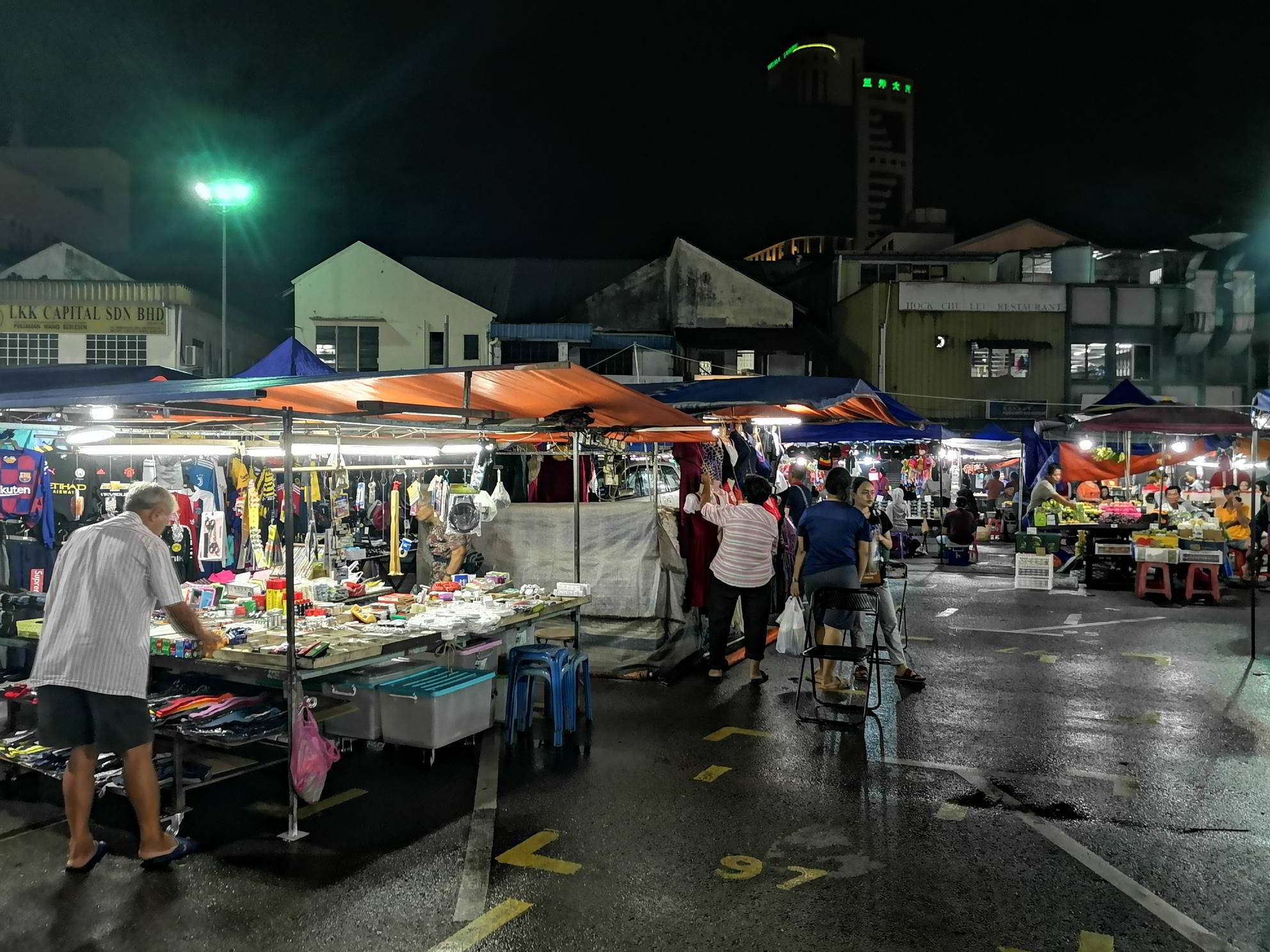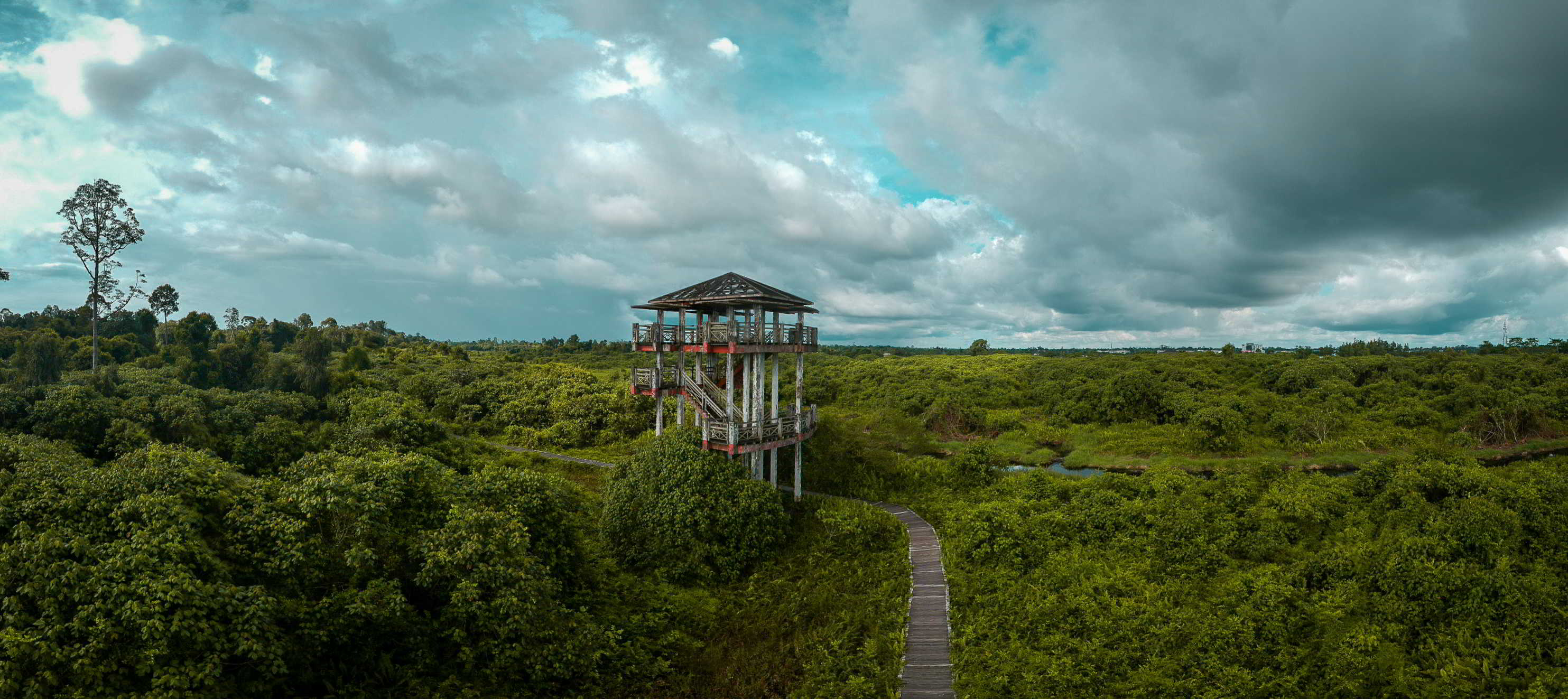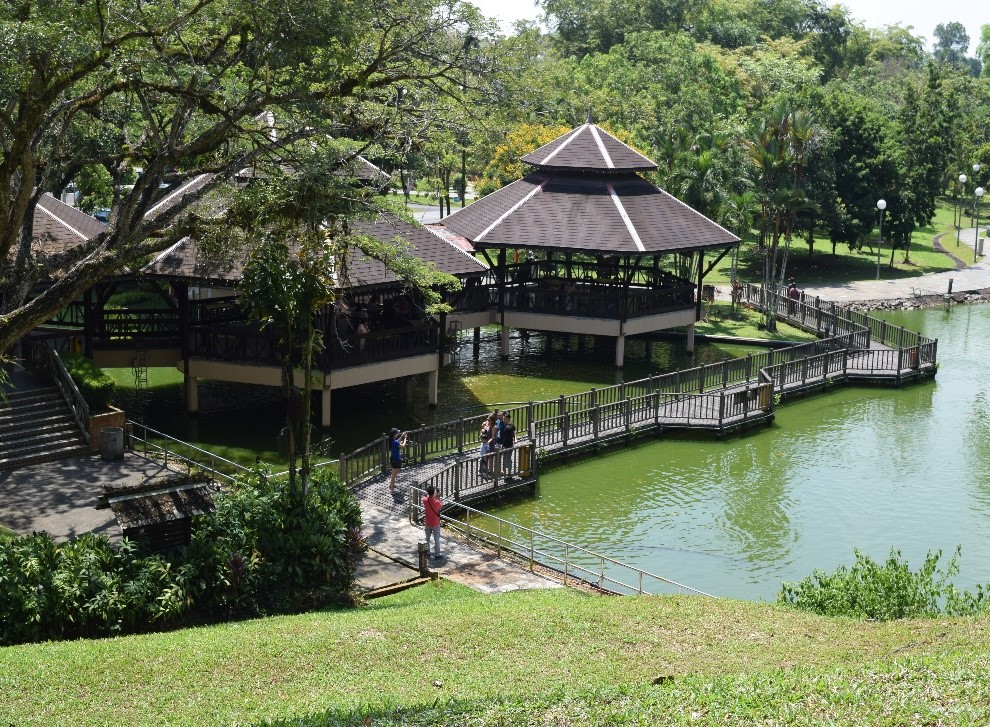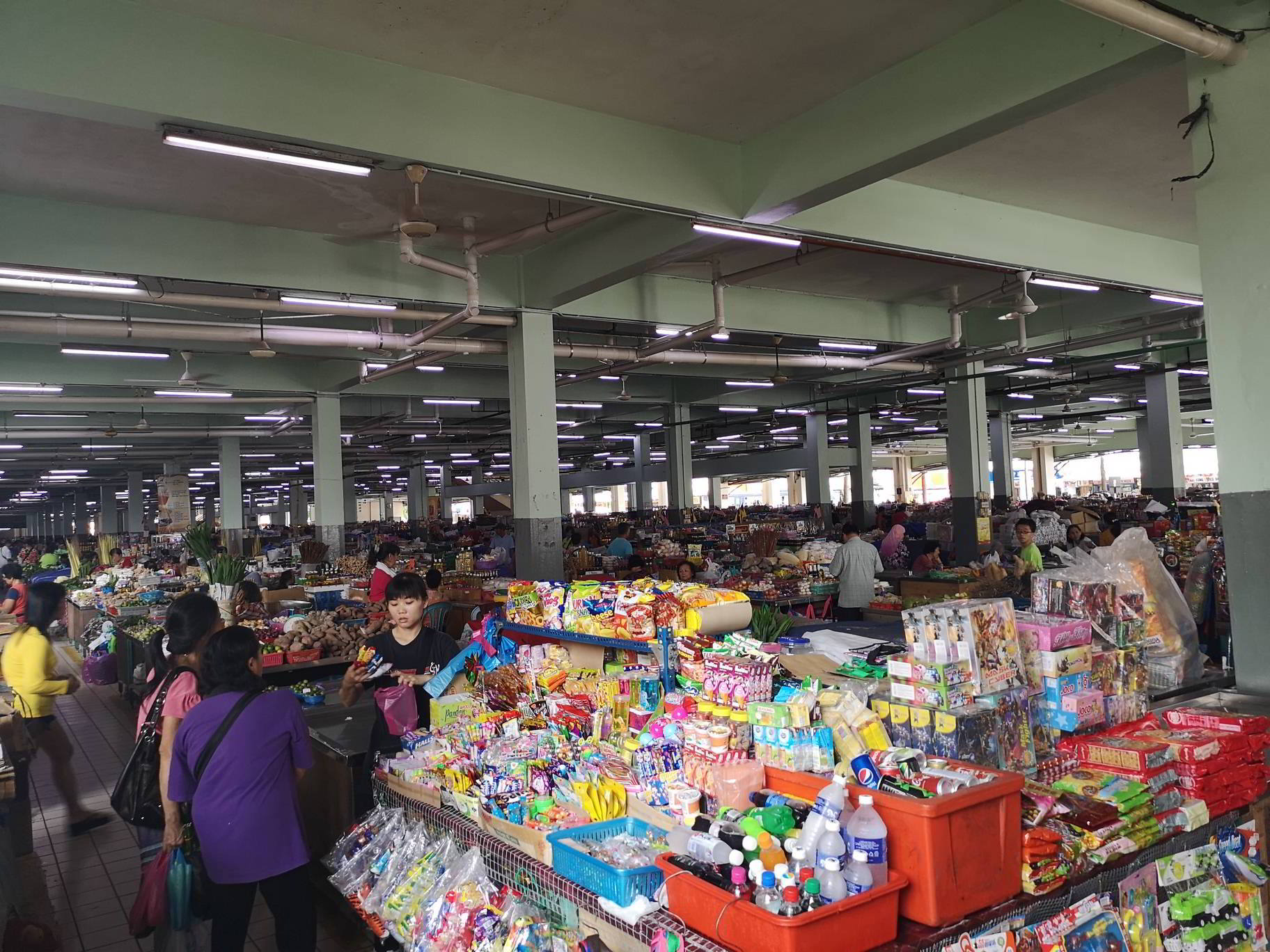Bau
A gold mining town, Bau has a rich, but violent history. On 1 May 1837, the Skrang Ibans invaded the Jagoi-Bratak Bidayuh settlement on top of Bratak Peak, killing over 2,000 Jagoi-Bratak Bidayuh men and taking 1,000 women captive. Panglima Kulow, head of the Jagoi-Bratak Bidayuh community, and a handful of his followers survived the massacre. In 1841 James Brooke, who was then the newly installed White Rajah of Sarawak, was able to rescue some of the women taken captive. Each year on 1 May, descendants of the survivors of the 1837 massacre hold Jagoi-Bratak Day on top of Bratak Peak in Bau in memory of their ancestors. A memorial stone was erected on 1 May 1988, to mark the day.
The Chinese first began gold mining in Bau in the 1800s, centred at Pangkalan Tebang. In 1850, more Chinese came from Pemangkat in Dutch Borneo to escape from inter-Chinese Kongsi rivalry there. The friction of the jurisdiction and taxation of Chinese Kongsi with the Brooke government and the $150 fine for smuggling opium imposed by the Brookes led to the Bau uprising on 19 February 1857. About 600 gold miners, led by Liu Shan Bang, took over Kuching town, the administrative centre of the Brooke government. The Sarawak Treasury was ransacked, including $6,359 belonging to the Borneo Company. The gold miners called a meeting where agreements were signed. On 23 February, a BCL steamship named Sir James Brooke returned from Singapore and flanked by a flotilla of small boats, the steamship sailed upriver in pursuit of the retreating Chinese gold miners. James Brooke retook the town of Kuching on the same day and Charles Brooke led several hundreds of Dayaks from Skrang and Saribas in pursuit of the 2,000 Chinese gold miners that retreated to Sambas in Dutch Borneo and by 15 March 1857 peace was restored.
After the uprising was quashed by the Brookes, the mining operations were gradually taken over by The Borneo Company with the last Chinese syndicate being bought out in 1884. In 1898, The Borneo Company introduced the cyanide process for extracting gold, which led to increased environmental pollution. The mines were closed in 1921 because most of the minerals, easily reachable by existing techniques, had been removed. However, during the Great Depression, Chinese miners continued to artisanally mine the deposits. The mines were reopened in the late 1970s when world gold prices soared but were closed down again in 1996 when the Asian financial crisis started. The last mining occurred at the Tai Parit open-pit mine.
Located 40 km southwest of Kuching, near the former Bau gold mining settlement, Fairy Cave is a limestone cave with unique rock formations. It is commonly known as Gau Pari and can be accessed after climbing a four-storey staircase. According to experts, Fairy Cave was formed around 200 million years ago during the Jurassic era. The stalactites and stalagmites within the cave have taken interesting shapes. It is believed that this structure got its name from a stalagmite that has a resemblance to a Chinese Goddess. The cave is massive and there are walkways for tourists who are willing to explore it. Visitors can take part in many adventure activities that take place on the cliff face. The most popular among them is rock climbing with different degrees of difficulty. A short drive from the iconic Wind Cave will take you to the Fairy Cave. Both the caves are visited together and can be covered in a half-day trip.
To reach the Fairy Cave entrance, visitors have to climb a four-storey staircase made from concrete. From the entrance, the cave looks dark and spooky with abundant greenery everywhere. The winding wooden stairs lead inside the cave. Make way through the steep and slippery steps into the main chamber with a huge opening that allows sunlight to burst in. This place is very beautiful and looks straight out of the postcard. The intimidating sight of the formations has a strange way of making connections. Besides the formations, ferns, mosses and bats cover this space. The water dripping from above feeds the tiny plants and the bats’ poop makes the soil fertile. From the massive opening, one also enjoys a breathtaking view of the surrounding areas.
A short drive from Fairy Cave is the Sarawak Wind Cave. It stands on the banks of River Sarawak and strikes visitors with stalactites and stalagmites formed over the centuries. Both of these caves are very different from one another and can be covered in a half-day trip. Wind Cave has three unlit tunnels and the interior is pitch dark. Unlike Fairy Cave, cars can be parked right at the entrance of the cave. For the convenience of the visitors, a 1000-metre plank-walk runs throughout the cave interiors. Wind Cave is also a natural habitat for rare species of plants and animals. Presently, there are 14 bat species and 12 snail species living within its dark walls.
For moving around in this cave one has to completely rely on torchlight. The routes are lined with reflective stickers and there are hand railings on both sides, hence there is a lesser probability of getting lost or falling off. Notice boards are installed at various points that provide information on different species in the cave. At the end of the passage, a path takes one down to one of the tributaries of the Sarawak River. There is a thin stretch of sand with public changing rooms. Hence, a refreshing dip is the best way to rejuvenate the senses after this exploration. The cave is open between 8:30 am and 4 pm.
The Blue Lake, also known as Tasik Biru, is located at a distance of 35 km from the Kuching City Centre in Bau. This lake was once an open-pit gold mine. However, since the gold mine got flooded, it was converted into an artificial lake. Tasik Biru is a scintillating turquoise lake and is about 91 meters deep. The scenic lake has deep and sharp edges and is surrounded by greenery. A floating platform is also constructed at the lake which allows visitors to get closer to the water. Although people can take part in a few water sports activities at the lake, the water is unsuitable for drinking since it contains arsenic contaminants.
Situated near the border of Malaysia and Indonesia in Bau, the Serikin Weekend Market attracts several people who wish to purchase goods from Indonesian sellers. These sellers come from Kalimantan on their bikes. Since there is no customs post here, the Indonesian goods become available at competitive prices. Some of the items that are sold at the Serikin Weekend Market include fabrics, handicrafts, antiques, rattan furniture and clothes. Further, authentic Bornean food is also available here.
Sibu
Known as the gateway to Batang Rejang, Sibu is a charming town with a vibrant culture and a bustling waterfront and has some of the best food in Sarawak. Around 190 km northeast of Kuching, Sibu is a popular day stop before or after venturing into the wild interiors of Borneo. One distinctive feature of Sibu is the Iban longhouses. Tourists can visit Iban longhouses and even have a stay to experience the Iban Tribal Life. Sibu is characterised by its diverse population, with a significant portion being of Chinese descent, primarily from the Fuzhou region.
Sibu is well known for the biggest town square in Malaysia, the Sibu Town Square. It also has the Lanang Bridge which connects Sibu to Sarikei and is the longest in Sarawak. Malaysia’s first and only medical museum, Lau King Howe Hospital Memorial Museum is located in Sibu. The city’s mascot is the swan which is an ancient Chinese symbol of health and good fortune. Swan statues can be seen dotted around town.
The city’s history dates back to its founding in 1862 by James Brooke, who built a fort to protect against attacks by indigenous Dayak people. Subsequently, a small group of Chinese Hokkien settlers established themselves around the fort, engaging in various business activities. In 1901, Wong Nai Siong led a significant migration of 1,118 Fuzhou Chinese from Fujian, China, to Sibu. Over time, infrastructure development took place, including the construction of the first hospital, Sibu bazaars, Methodist schools, and churches.
Sibu faced significant challenges in its history, enduring fires in 1889 and 1928 that destroyed the town. However, it was successfully rebuilt on both occasions. During the Second World War, Sibu fell under Japanese occupation, resulting in a renaming of the city to Sibu-shu in August 1942. After the Japanese surrender in 1945, Sarawak became a British Crown Colony. This led to unrest among young Melanau individuals in Sibu who were in favour of independence, culminating in the assassination of Sir Duncan George Stewart, the second British Governor of Sarawak, during his visit to Sibu in December 1949. The perpetrator, Rosli Dhoby, was subsequently executed in 1950.
In the post-war period, Sibu and the Rajang basin became a centre of communist activities, which continued even after Sarawak gained independence in 1963. The establishment of the Rajang Security Command or RASCOM aimed to curb communist activities in the area, and the communist insurgency in Sarawak was eventually suppressed in 1973, coming to a complete end in 1990. The city celebrated the 110th anniversary of the Fuzhou settlement in 2011.
Before 1873, Sibu was known as Maling, a name derived from a bend in the Rajang River referred to as Tanjung Maling. This bend was located opposite the present-day town of Sibu and near the confluence of the Igan and Rajang rivers. The area was named after this prominent geographical feature. The name Sibu itself was derived from the native Pulasan fruit, which was abundant in the region. In the Iban language, this fruit is known as Buah Sibau. Consequently, it was named after the Pulasan fruit, reflecting the rich natural resources and cultural significance of the area.
The Sibu Heritage Centre is worth visiting with its collection of antiques and chronological history. It unveils the cultural life and heritage of the people of the central region. The heritage centre is an educational place that houses a local museum which chronicles extensive information about the early Chinese settlements and other races along with the history of the local folk tribes inhabiting the town. The centre has a few shops selling beautiful local handicraft items with intricate patterns and some lovely souvenirs to take back home.
An initiative of the Sibu Heritage Centre, the Sibu Heritage Trail was launched in 2012 to encourage tourism in Sibu and celebrate the cultural ethnicity of the city. The trail largely covers nine heritage sites some of which include the Old Muslim Cemetery, Tua Pek Kong Temple, Masjid An-nur, Rosli Dhobi Warriors Memorial and Hoover Memorial Square among others. The trail stretches along approximately 4 km covering almost all heritage sites in the town. One can avail the walking maps, brochures and more information about these sites from the tourist information centre, hotels or travel agents in the area.
The Borneo Cultural Festival is one of the most famous festivals of Sibu which takes place in July and August and is the best time to visit. The festival is a week-long event which celebrates the tribal diversity of the area with dance, music and food.
Since 2005, the Borneo Cultural Festival or BCF has been held by the Sibu Municipal Council in July every year at the Sibu Town Square, for 10 days. It is a celebration of traditional music, dances, contests, beauty pageants, food stalls, fun fairs, and product exhibitions. There are 3 separate stages for Iban, Chinese, and Malay performances. It draws around 20,000 people every year. The festival was stopped briefly in 2011 before it was resumed in 2012.
One of the oldest Iban settlements in Sibu, Bawang Assan Longhouse Village is located about 40 minutes away from Sibu’s main town. One can drive up here or enjoy a cruise ride along the beautiful Ranjang River. Bawan Assan has a series of nine longhouses ranging from fusion traditional dating to the 18th century to modern houses that visitors are allowed to stay at and experience the cultural ethnicity and traditional delicacies at this place. The houses are well-maintained and offer excellent views of the area.
The beautiful Rejang Esplanade along Malaysia’s largest river is a stunning riverfront promenade stretching from the Express Boat Passenger Terminal to the Kingwood Hotel. It is an attractive spot among locals and tourists that offers picturesque views of the flowing river and a grass-occupied waterfront with fishing boats parked across the esplanade. The place has a spectacular Swan statue that also happens to be the symbol of Sibu.
Formerly a well-equipped hospital used to treat people from all ethnic tribes, the Lau King Howe Memorial Museum is now a museum that showcases an array of collections of antique hospital instruments and tools, uniforms of nurses and caretakers, etc. It offers a fun detailed explanation of the life and history of the hospital, its doctors and its workers. The place was built by donations of Lau King Howe and is conveniently located close to the Rejang River. One can enter the place by knocking at the main entrance.
Stretching approximately 1.2 km over the Rajang River connecting the town of Sibu and Sarikei, the Lanang bridge was built in 2003 to replace the ferry facilities to get across the river. Initially, a toll bridge with expensive toll prices, the bridge started to receive criticism and the government suggested taking over and abolishing toll taxes. The bridge offers breathtaking sunset views overlooking the muddy river.
Built in the 1800s by an Indonesian king, the Masjid Al-Qadim stands in Sibu town as one of the oldest structures there. Located at Jalan Kampung Nyabor, the mosque was originally built of timber and leaf attap and continues to develop and restore its glory. However, the main house of worship remains unchanged over the years, falling in place with the monumental architecture signifying the prosperity of the Muslim culture.
Also known as the Yu Lung San Tien En Si, the Jade Dragon Temple is a Chinese temple located about a 45-minute drive from the Sibu main town. Presently the largest temple in the country, it has a worship place for Buddhists, Taoists and Confucianists bringing all three religions under one roof. The temple has a huge premises with red building pillars and spectacular Chinese architecture.
Sibu Night Market is located right in the centre of Sibu town on the market road. The stalls at this place are set up as early as 4:30 pm and offer a range of everything including toys, household items, clothes, shoes, bags, accessories, etc. However, the main attraction of this market are the mouth-watering food stalls. The shop owners serve a variety of local food along with authentic Chinese and Malay delicacies. The market is open daily from 5 to 10 pm.
Initiated as a private event in 2012, the Sibu International Dance Festival is hosted annually at the Sibu Civic Centre & Kutien Memorial Park to actively commemorate the art of dance. They help create divine masterpieces and productions to enlighten the audiences about art education and promote economic development. The festival attracts a large number of performers and dancers from across the globe allowing them to compete in harmony and exchange cultural knowledge through dance forms.
Located about 6 km away from Sibu city centre, Bukit Lima Forest Park is a recreational park close to the Sentosa residential area. The park houses stretched out boardwalks through the tropical rainforest trees with a few monkeys, squirrels and other animals in sight. The entrance is huge with arched pillars and inside is an open space playground at the start of the park. The place has two treks, the Bukit Lima Trek and the Ta Ann Trek.
Sibu town square, as the name suggests, is right at the centre of the town and is popular among locals and tourists all year round. Although it is commonly used as a regular area by locals, the town square is famous for hosting religious events and major occasions like Sibu International Dance Festival, cultural activities, food festivals, the infamous night market, etc. Event information is usually available on the Sarawak Tourism page.
Half an hour away from the main town of Sibu, the Bukit Aup Jubilee Park is a recreational place with lush green landscapes and a crowd of hilly terrains. The entrance of the park has a wonderful pond to enjoy feeding the fish. You will find a park with fitness equipment at the foot of the hills from where you can begin hiking to the top. The climb to the top is exciting with a rope bridge to cross in the middle. It also houses a watch tower that offers splendid views of the nearby longhouses and the Igan River. The park is open daily from 8 am to 6 pm.
Sibu is home to Malaysia’s largest indoor market, Sibu Central Market. It has everything from apparel to souvenirs to local food to try. It is also one of the best places to buy local handicrafts. Sibu Night Market is another prime market which is famous among locals and tourists and is the liveliest in Sarawak. Bargaining is common in the night market and a myriad of options are given to buy from.



